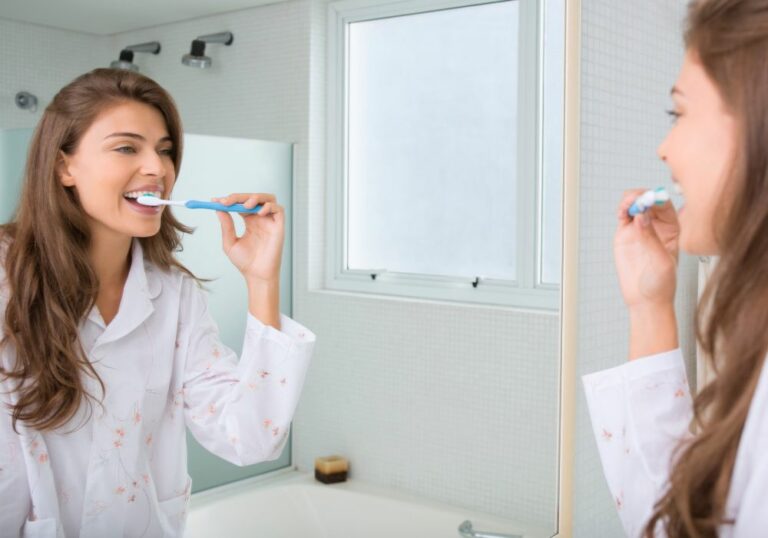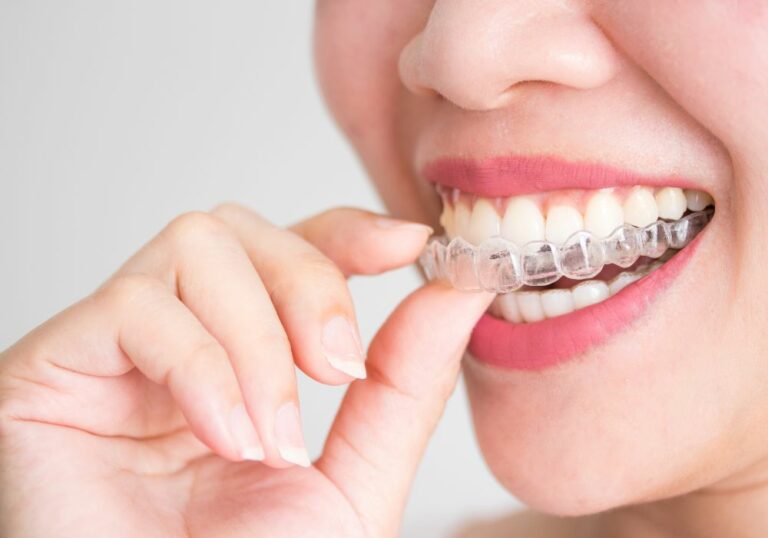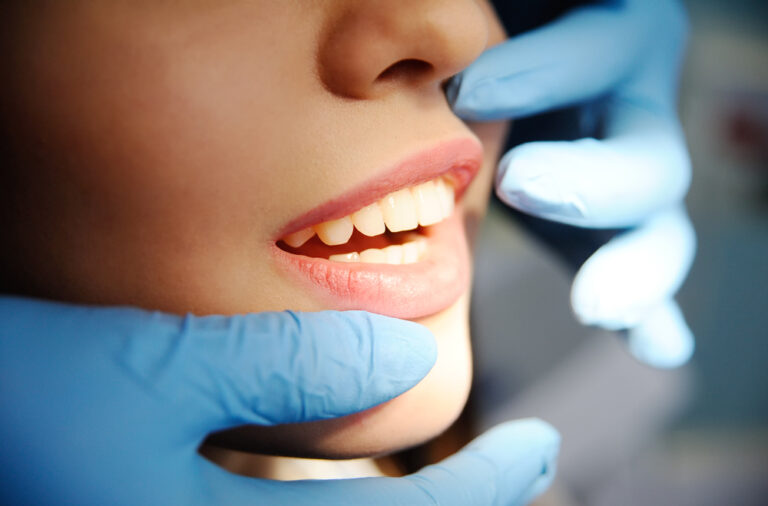Waking up to find that all your teeth are aching and sensitive can be an alarming experience. Having widespread dental pain come on suddenly demands an explanation. Determining the exact cause is crucial so that the appropriate treatment can be administered for relief.
There are several potential reasons behind such extensive tooth pain:
Possible Explanations for Sudden Toothaches Across All Teeth
1. Sinus Infection
One of the most common culprits of tooth pain affecting all upper teeth simultaneously is a sinus infection. The maxillary sinuses are located above the upper teeth, cheekbones, and sides of the nasal cavity. These hollow spaces are connected to the upper teeth via nerve pathways.
When the sinuses become inflamed due to sinusitis, the swelling can travel along the nerve routes and cause referred pain in the upper teeth. A sinus infection may also lead to increased sinus pressure which can compress the nerves and exacerbate tooth sensitivity.
Typical symptoms pointing to a sinus issue include:
- Congestion and stuffy nose
- Postnasal drip down the throat
- Pus-like nasal discharge
- Headache concentrated in the sinus areas
- Sore throat
- Coughing
- Fever
- Halitosis
- Fatigue
- Tooth sensitivity and pain in the upper regions
If the toothache stems from a sinus problem, the pain will typically feel worse when tilting the head forward and putting pressure on the face. Drainage may also increase from the nose. Treatment of the sinus infection, swelling, and inflammation will provide relief from the related dental pain. Decongestants, nasal irrigation, antihistamines, steroids, and antibiotics may be used.
2. Dental Abscess
A dental abscess occurs when a pocket of pus forms in the soft tissue and bone surrounding the teeth. It is primarily caused by untreated tooth decay that allows oral bacteria to infect the tooth’s inner pulp tissue. Abscesses can also develop from severe gum disease, trauma to the teeth, or failed root canal treatment.
The buildup of pus puts pressure on the tooth and triggers intensifying pain. The infection and inflammation can then spread from the affected tooth to the bone and surrounding teeth. This can result in sudden, sharp pains in multiple areas of the mouth.
Additional abscess symptoms include:
- Throbbing, pounding toothache that may radiate to other teeth or the jawbone, ears, and head
- Sensitive teeth when chewing or applying pressure
- Foul mouth odor
- Metallic taste in the mouth
- Fever and chills as the infection worsens
Prompt dental treatment is required to drain the abscess, treat the problem tooth via root canal therapy or extraction, and stop the spreading infection. Antibiotics may be administered to control the infection in the short-term.
3. Cracked Tooth Syndrome
Cracked tooth syndrome refers to a fracture, split, or crack in a tooth that allows irritants, cold, heat, and bacteria to inflame the inner pulp. A cracked filling can also cause similar sensitivity.
There are different types of cracked teeth:
- Craze lines – Shallow cracks in the outer enamel that rarely cause pain
- Fractured cusp – Broken chunk of a tooth
- Split tooth- Crack extends from crown down through the root
Split teeth and fractures deep enough to expose the dentin and pulp tissue become very painful. As the crack widens, it fills with debris and allows bacterial incursion which inflames the nerve.
This irritation of the tooth’s pulp can lead to acute, sporadic dental pain that is difficult to pinpoint. The pain may shift locations and seem to affect multiple teeth even though it is coming from one problematic cracked tooth.
Biting and chewing typically makes the pain worse. The tooth needs to be identified through x-rays, special dyes, or magnification devices. Treatment depends on the crack’s location and severity and may involve bonding, crown placement, or tooth extraction.
4. Gum Disease
Advanced periodontal (gum) disease can also lead to sudden pain in all of one’s teeth due to the progressive damage to the gums and supporting structures.
In gingivitis, the mild early stage, gums redden, swell, and bleed easily. There is usually no pain.
As gum disease advances to periodontitis, the gums pull further way from the teeth and pocketing develops. These abnormally deep spaces become infected. The periodontitis also begins destroying the bone, periodontal ligament, and connective tissues anchoring teeth in place.
This tissue and bone loss causes painful loosening of the teeth and increased sensitivity to hot and cold foods. Chewing may also trigger toothache. The looseness allows teeth to shift and puts abnormal pressure on one’s bite which further irritates the inflammation.
Seeing a dentist promptly for scaling and root planing and gum disease treatment is critical. Left unchecked, periodontitis can cause irreversible tooth loss.
5. Bruxism
Bruxism refers to clenching or grinding of the teeth which places tremendous pressure on the teeth and underlying bone. This strenuous grinding can fracture enamel, damage the temporomandibular joint, and wear down tooth surfaces. It also overworks the muscles of mastication leading to muscle stiffness and jaw ache.
The cumulative small injuries to the teeth and force transmitted down the tooth roots can lead to generalized tooth sensitivity and pain. The symptom is often described as an ache or pressure in all of one’s teeth. Difficulty chewing, sore teeth, headache, and jaw stiffness upon waking are common symptoms.
Wearing a custom nightguard helps prevent the damaging grinding and gives bruxist tooth surfaces a chance to heal. Botox injections to relax the masseter muscles may also help relieve symptoms. Stress reduction is also key.
When To See a Dentist About Sudden Multi-Tooth Pain?

Make an appointment to see your dentist right away if you suddenly develop unexplained aching in all or most of your teeth. Any dental pain that comes on rapidly warrants prompt examination and diagnosis by a dentist. This ensures appropriate treatment can be initiated quickly to resolve the underlying problem.
The dentist will conduct a complete oral exam, look for clinical signs of infection or damage, and order X-rays or other testing to pinpoint the cause of discomfort. Waiting with widespread tooth pain risks dental abscesses, cysts, or benign growths progressing unchecked.
Seek emergency dental treatment immediately if you have any of the following accompanying sudden toothaches:
- Severe, throbbing, unbearable tooth pain
- Sustained pain for more than 1-2 days
- Facial or gum swelling
- Bleeding from the gums
- Redness or pus discharge
- Difficulty breathing or swallowing
- Fever and chills indicating infection
Until you can see the dentist, take over-the-counter pain relievers as directed. Ibuprofen (Advil) or acetaminophen (Tylenol) help ease the pain and inflammation temporarily. Avoid chewing, biting, or consuming hot or cold foods that aggravate the teeth. Get dental treatment promptly to identify and resolve the underlying cause.
Typical Dental Examination and Diagnostic Process
During your dental visit, the dentist will perform a thorough clinical examination and gather information to help determine the cause of the mysterious multi-tooth pain. Be prepared to explain:
- Which teeth are hurting the most
- The type of pain – sharp, dull, throbbing etc
- Timing of when the pain started
- Activities that worsen the pain – chewing, cold air, hot food etc
- Other related symptoms like headache or sinus congestion
The dentist will carefully assess all your teeth, gums, oral tissues, bite alignment, jaw joint etc. They will likely:
- Check teeth and gums for visual signs of decay, cracks, gum swelling or recession, lesions, and abscesses
- Note areas of redness, inflammation, swelling, discharge, and bleeding
- Look for fracture lines or broken/loose teeth
- Feel your face, neck, and lymph nodes for swelling or tenderness
- Tap gently on your teeth to test for pain response
- Wiggle teeth to check for looseness – a sign of periodontal disease
- Evaluate your bite alignment and look for irregular contacts
- Test gum pocket depths to check for periodontal disease
- Check sinus cavities for tenderness
The clinical exam gives crucial clues to identify the likely problem. However, the dentist will also order dental x-rays and other imaging to gain more diagnostic information.
Common Diagnostic Testing Used to Evaluate Widespread Dental Pain

Some typical diagnostic tests used to investigate the source of sudden multi-tooth pain include:
Dental Imaging Exams
- Intraoral x-rays – Full mouth x-ray series and panoramic x-rays visualize overall dental health and highlight issues between teeth or in the jawbone.
- Cone beam CT scan – This 3D imaging helps detect cracked teeth, tumors, impacted teeth, cysts, infections, and damage to underlying bone.
- Intraoral camera – Takes detailed digital photos to document gum recession, decay, fractures etc.
Oral Pathology Testing
- Cold sensitivity testing – Applying cold stimulus to individual teeth to check for pain response.
- Cavity detection dye – Special dye shows tiny areas of decay.
- Bite test – Patient bites down on thin sheet to highlight irregular bite contacts.
- Percussion test – Light tapping on suspect teeth with a tool to provoke any pain.
- Pulp vitality testing – Monitors nerve health and blood flow within a tooth to diagnose need for root canal therapy.
Gum and Bone Diagnostics
- Probing depth measurements – Checks for periodontal pockets around each tooth, a sign of gum disease.
- Gum recession measurements – Documents receding gums.
- Bone loss assessment – X-rays help determine any bone destruction around teeth.
- Tooth mobility evaluation – Wiggling teeth to determine looseness.
Saliva Testing
- Saliva flow measurement – Indicates hydration status.
- pH level – High acidity indicates greater caries risk.
After completing a comprehensive dental examination and any needed testing, the dentist makes a diagnosis and recommends appropriate treatment.
Common Treatments for Sudden Multi-Tooth Pain
The treatment options depend on the specific condition causing widespread dental pain. Common treatments include:
For Infections –
- Antibiotics – Prescribed short-term to control bacterial abscesses or infections and reduce swelling.
- Root canal therapy – Removes infected tooth pulp and repairs interior of the tooth if tooth can be saved.
- Tooth extraction – For non-restorable infected teeth or severe abscesses. Tooth is removed and area cleaned out.
- Draining abscesses – Creates an opening to release the pus and infection buildup, relieving pressure on the tooth.
For Gum Disease –
- Deep cleaning – Removes built-up calculus above and below the gumline.
- Periodontal surgery – Flap procedure, tissue grafts, bone grafting etc. to treat advanced gum disease and regeneration.
- Laser decontamination – Kills bacteria in periodontal pockets.
- Antimicrobial rinses – Reduces levels of harmful oral bacteria.
For Damaged Teeth –
- Dental crowns – Restore and protect fractured or worn teeth.
- Tooth extraction – For severely damaged non-salvageable teeth.
- Nightguard – Protects against fracture from bruxism and clenching.
- Orthodontics – Realigns bite.
- Bone graft – Repairs missing bone from trauma or disease.
For Sinusitis –
- Nasal steroids or antihistamines – Reduces sinus inflammation to relieve referred tooth pain.
- Decongestants – Improves sinus drainage.
- Antibiotics – For bacterial sinus infections.
- Saline irrigation – Flushes mucus and bacteria from nasal passages.
With the appropriate diagnosis and prompt treatment, sudden unexplained toothaches affecting all teeth can be quickly resolved. Don’t delay seeking dental care.
At-Home Relief Tips for Multi-Tooth Pain

While waiting to see your dentist, you can use these methods to temporarily ease intense, widespread dental pain:
- OTC painkillers – Ibuprofen, naproxen or acetaminophen reduces inflammation and discomfort. Use as directed.
- Orajel – Benzocaine numbing gel applied to gums near painful teeth can temporarily relieve sensitivity.
- Cold compress – Ice pack wrapped in cloth placed against the cheek over painful teeth helps numb nerves.
- Salt water rinse – Swishing warm salt water helps reduce swelling and inflammation.
- Dental wax – Can cover exposed dentin on a cracked tooth to reduce sensitivity.
- Soft foods – Stick to a soft diet avoiding hard, crunchy, sticky foods that aggravate symptoms.
See your dentist right away for an accurate diagnosis and proper treatment plan to resolve sudden generalized tooth pain and prevent complications.
Frequently Asked Questions
1. Why would all my teeth suddenly start hurting at the same time?
There are a few possible reasons all your teeth may suddenly start aching at the same time:
- A sinus infection causing inflammation near the upper teeth
- A dental abscess from an infection spreading to multiple tooth roots
- Gum disease that has advanced and is affecting the ligaments around multiple teeth
- A cracked tooth or filling that is transferring pain to surrounding teeth when chewing
- Clenching or grinding your teeth at night that is damaging multiple teeth
- A dental issue like an abscess or gum infection that progresses unchecked
2. Can a sinus infection cause pain in your teeth?
Yes, sinus infections can definitely cause tooth pain, especially in the upper back teeth. That’s because the roots of the upper teeth sit right below the maxillary sinuses. When those sinuses become inflamed due to sinusitis, the nearby nerves can become irritated. This results in sensitivity and referred pain in the upper teeth. Treating the sinus infection will usually resolve the toothache.
3. Is it normal for teeth to hurt after a filling?
It’s common to have some mild post-filling sensitivity that resolves within a few weeks. However, severe tooth pain after getting a filling likely indicates an underlying problem such as:
- Irritation or damage to the pulp during drilling
- Filling not properly shaped and high spots causing bite issues
- Infection or abscess under filling
- Cracked tooth
Contact your dentist if you have a toothache, hot/cold sensitivity, or pain when chewing after a filling. You may need a root canal, crown, or bite adjustment.
4. What does it mean if only a few teeth randomly start hurting?
When the pain is more isolated to just a few random teeth, it typically indicates a problem with those specific teeth, such as:
- Dental decay
- A cracked or fractured tooth
- An injured tooth or filling
- An abscess or infection at the tooth root
The dentist will be able to identify which individual teeth are causing the pain. From there, they can recommend appropriate treatment for just those affected teeth.
5. When should I see a dentist for sudden tooth pain?
You should see a dentist right away if you have any sudden, unexplained tooth pain. It’s important to get prompt professional evaluation and treatment to resolve the underlying problem and prevent complications. Seek emergency dental care if the pain is severe or you have swelling, fever, trouble breathing or swallowing. Leaving some dental issues untreated can lead to serious consequences.






